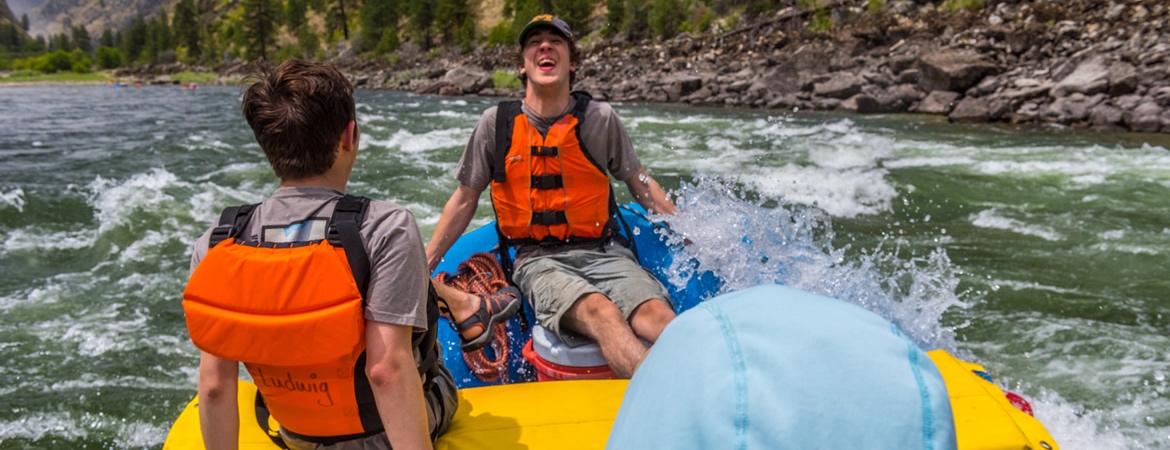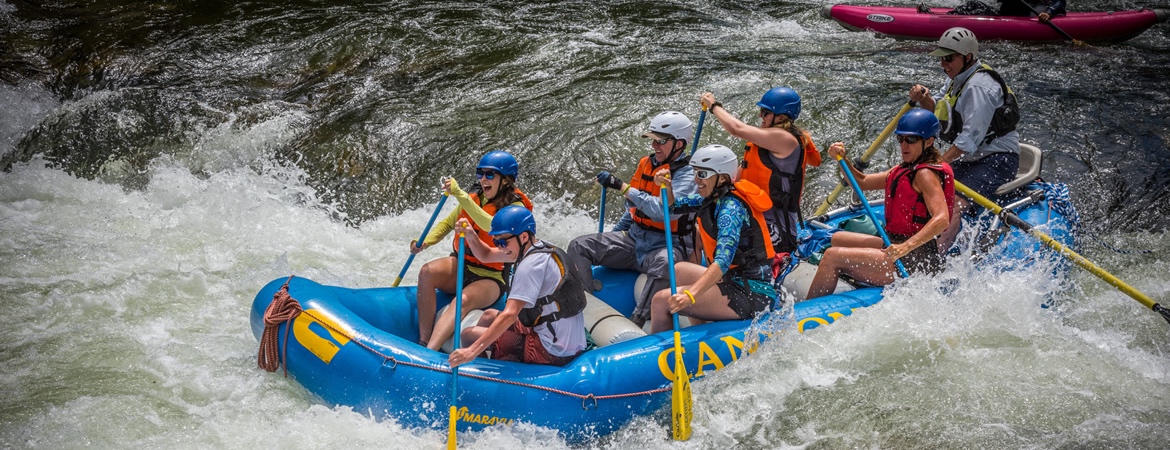(208) 634-4303 | RIVERBEAT BLOG
SIX OR TWELVE DAY RIVER ADVENTURES
MIDDLE FORK AND MAIN SALMON RIVERS, IDAHO
Middle Fork of the Salmon River Trips
Ahhh, the Middle Fork of the Salmon, often referred to as the “perfectly designed” river. Here at Canyons, we believe that to be true. If you have never heard much about the place then congratulations, you have just stumbled upon a river nirvana.
The Middle Fork is simply a very special place filled with very special experiences. The uniqueness of this river is unparalleled. From its ever changing landscapes and dramatic scenery to its multitude of whitewater, the Middle Fork of the Salmon is truly a National Treasure.
As you discover more, you will see this place leaves an indelible mark. It really is like no other. Flowing North and traveling nearly 100 miles and dropping 3000’ vertical feet, the Middle Fork simply delivers beauty and awe around every corner. As a constant gradient river, this Idaho gem drops quickly from the high lodgepole forest to open hillsides with old stand Ponderosas, rock outcroppings and hot springs and eventually leads you into a dramatic granite canyon decorated by sheer walls of shists and gneiss. With nearly 100 tributaries in 100 miles, this river grows exponentially in water and landscape. From its many hot springs, abundant wildlife and famous rapids, the Middle Fork “brings it” in every way. It charms your soul. We promise. This place will leave you changed in the way you think of rivers. As Idaho’s crown jewel, it really does have its own unique sparkle.
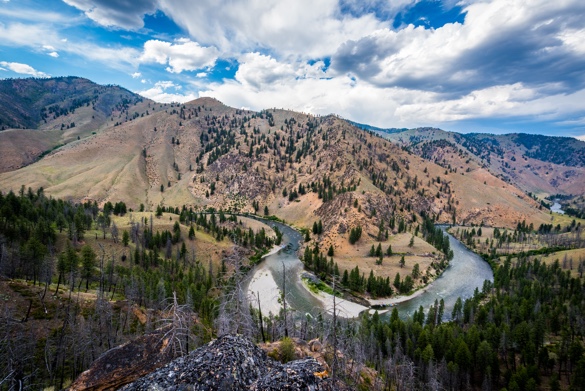
Wilderness:
The Middle Fork flows through the heart of the Frank Church Wilderness of No Return, the largest contiguous wilderness in the lower 48 states, encompassing 2.3 million acres. With no roads, wi-fi, phone service or technological amenities, you can truly unplug. A short wander away from camp gives you the peace and solitude rarely found these days in the fast-paced world that we live in. All of our camps are reserved in advance, thus enhancing the feeling of remoteness. As we float down the river through forests and grasslands, deserts and granite gorges, the sights and sounds of nature abound. You’ll find it easy to escape into the feeling of being one with this wild, beautiful, and remote landscape. At night the sky is illuminated by millions of stars and/or soft beautiful moonlight. Disconnect to Reconnect!
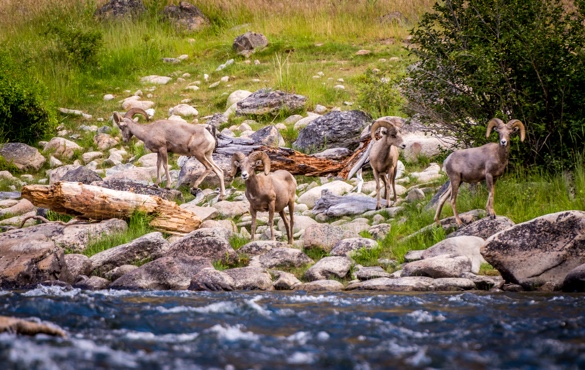
Wildlife:
An abundance of wildlife thrives along the banks of the Middle Fork of the Salmon. Large game animals such as Big Horn Sheep, Mule Deer, Elk and Moose roam the hillsides. A host of predators including Wolves, Fox and Mountain Lions, hide in the shadows, eyeing their prey. Along the banks of the river, Otter and Mink play and busy about. Numerous varieties of birds migrate through and several stop to nest for the summer. Some of the most common fowl to be seen include Eagles, Osprey, Red Tail Hawks, Mergansers, Teals, Mallards, Chucker, Grouse and Wood Peckers. Squirrels and Chipmunks scurry about. Bull Snakes, Gardner Snakes and Rattle Snakes are seen upon occasion. Black Bear amble about foraging for berries and grubs. The wilderness is teeming with life. Keep your eyes peeled!
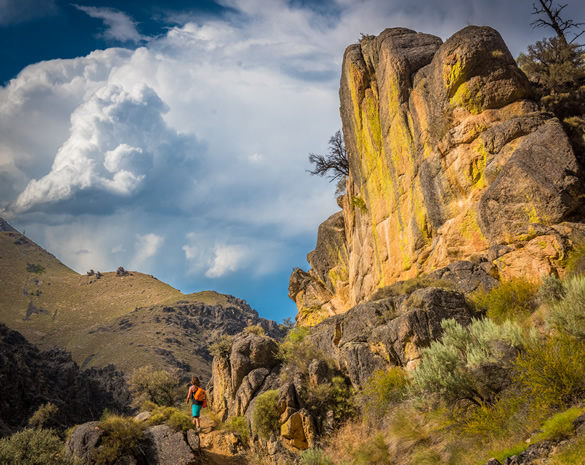
Hiking & Exploration:
There are ample opportunities for hiking and exploration, whether you prefer to stick to a trail or bushwhack up a hillside. The Middle Fork trail follows the river for 3/4 of the length of the river. Multiple trails bisect the river and numerous side tributaries host trails as well. Human traffic has frequented this area for hundreds of years beginning with the Sheep Eater Indians and more recently explored by gold rush miners in the late 1800’s. Hundreds of residual trails criss cross the wilderness and can be stumbled upon at any time. From camp you can hike up ridges to grand vistas or you can take a riverside stroll on the Middle Fork trail. Occasionally we stop as a group for mid-day hikes up to vistas, along side tributaries or to various attractions. Explore more!
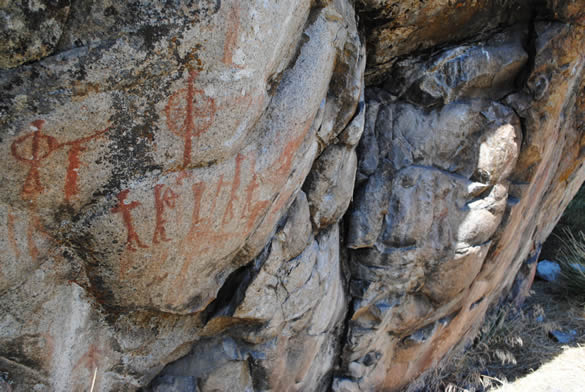
History:
Humans have called the Middle Fork home for at least 4000 years. The first known inhabitants were members of the Shoshone-Bannock Sheep Eater tribe. They migrated up and down the river, hunting and gathering in bands of 15-35. They left behind pictographs in numerous places throughout the river corridor. At these sacred sites, remnants of their inhabitance can be found such as pit depressions in the earth from their structures, cracked muscle shells, obsidian flakes, and shattered sheep bones. In the mid to late 1800s, miners flocked to the area in search of gold and silver, leaving hundreds of miles of trails and rubble remnants of their hard work. In the 1950s boaters began descending the river and have continued to explore it’s corridor ever since. Look, learn and participate, we are all part of history!
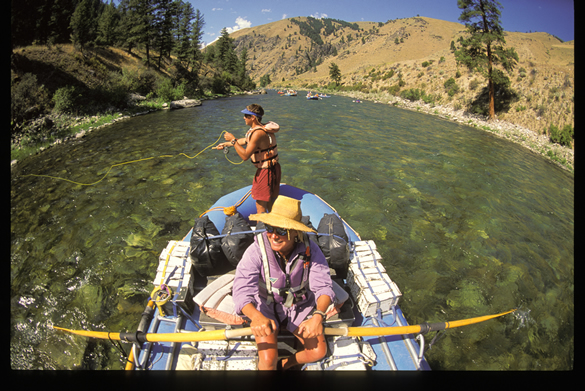
Fishing:
The Middle Fork of the Salmon has world renown blue-ribbon trout fishing. Cutthroat and Rainbow Trout and the endangered Dolly Varden or Bull Trout, lurk in the deep pools, and eddy hop their way up and downstream. Fishing on the Middle Fork is mandatory catch and release, with single barbless hooks. Anyone interested in fishing must obtain an Idaho state fishing license prior to the trip. The fishing opportunities are ample. You can fish during the day off of the back of a raft, you can cast away during lunch or other mid-day stops, and you can fish at camp, which are generally near side tributaries and/or deep pools. From its headwaters to the confluence with the Main Salmon, the Middle Fork of the Salmon is a free-flowing river. With crystal clear cold water it’s a fisherman’s dream. Fish on!
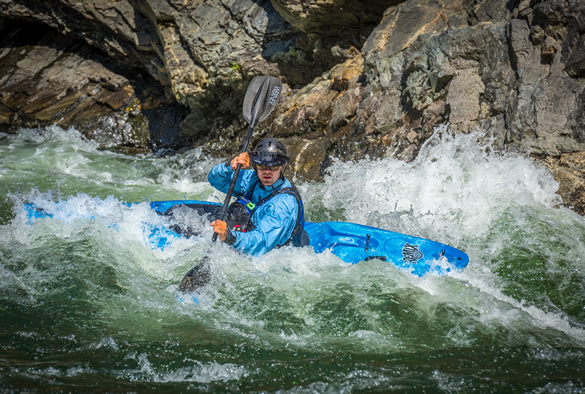
Kayaking:
The Middle fork is a classic non-stop class III-IV kayak run. With continuous whitewater and an elevation drop of 3000 feet over 96 miles, the excitement never stops. With rapids every day, you just can’t get bored. Most surf is catch on the fly, with an occasional park and play wave, throughout the trip. Early June offers higher volume, colder temperatures, and a more consistent class IV river. This time of year we ask that paddlers have a consistent roll and be comfortable in continuous class IV. July-September the volume drops, the water temperatures rise and the nature of the river turns into a super fun and friendly class III-IV stretch, with ample recovery time. This is a better time for solid class III paddlers. Each day provides different character, with easier stretches and harder stretches. Surf, brace, roll, repeat!
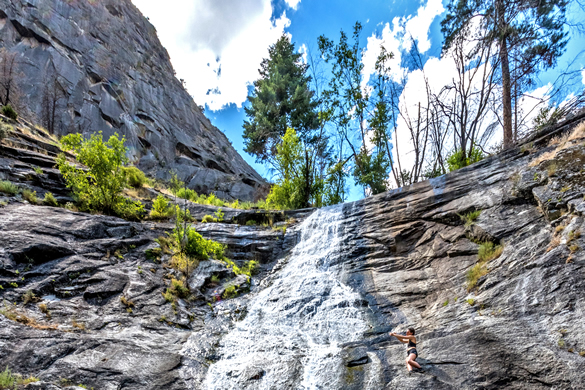
Waterfalls:
Throughout your journey, numerous cascades careen into the river. Some are visible from the river while floating downstream, others are a short jaunt up a side drainage. They vary in volume, height, and magnitude, from floating mists to cascading torrents and everything in between. Every day, unique water features grace the landscape and tease the imagination, surprising you in their fervor and fragility. Ferns, Columbines, and Orchids decorate the rocks and walls, Ouzels hop about, collecting moss for their nests and Big Horn Sheep and Mule Deer drink from the pools. You will be amazed at the amount of water that joins the river every day and your body and soul will be delighted in absorbing its cool energy. Whether you are a frolicker, a photographer or an observer, it’ll blow your mind!
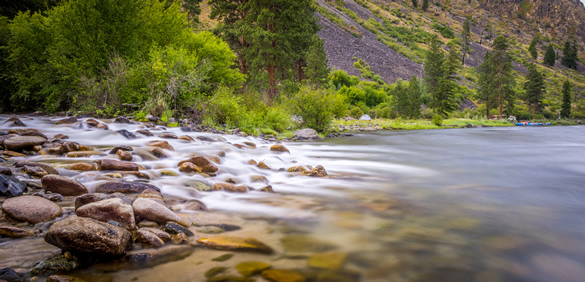
Over 100 Tributaries:
In 106 miles, the Middle Fork continually increases in volume as over 100 side creeks, seeps, and springs make their way down the hillsides and into the river. From gurgling potable springs to raging creeks full of trout, from cascading waterfalls and serene seeps to therapeutic natural geothermal hot springs, and babbling brooks, there is no shortage of water racing to join the river flow. At some points, every few hundred feet another source of water is entering the river. On the first day, the river is small and shallow and by the last day, it’s magnificent and deep. In its eternal race towards the ocean, water seeps out of every place possible, nourishing the botany and the wildlife. By the confluence with the Main Salmon, the Middle Fork has doubled or even tripled in volume. Go with the Flow!
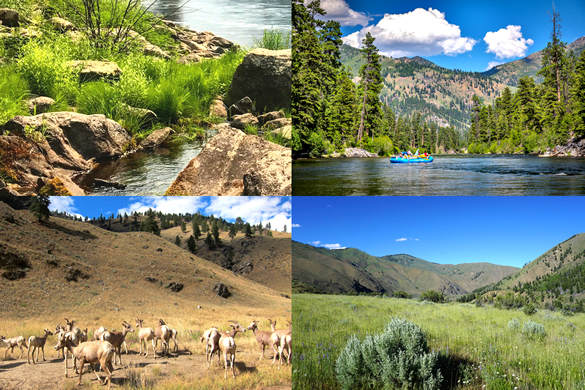
Ecology:
All four of Idaho’s ecosystems are represented on the MF. Forest, Desert, Grasslands, and Wetlands. From Boundary Creek, we begin in an Alpine Forest. Lodgepole Pines and Douglas Firs dominate the landscape. Occasional Wetlands hide along the banks, hosting bugs and birds alike. Further downstream you enter the High Desert Forest with Ponderosa Pines and Mountain Mahogany. Eventually, Sagebrush makes an appearance in the wide-open Grasslands, as the landscape opens up to incredible vistas. By the end, as the canyon walls rise, the Juniper trees appear as we enter the Desert. Douglas Fir and Ponderosa Pine are miraculously present through all of the eco climates. It’s a journey through 3000 vertical feet of microclimate changes. Nature Rocks!
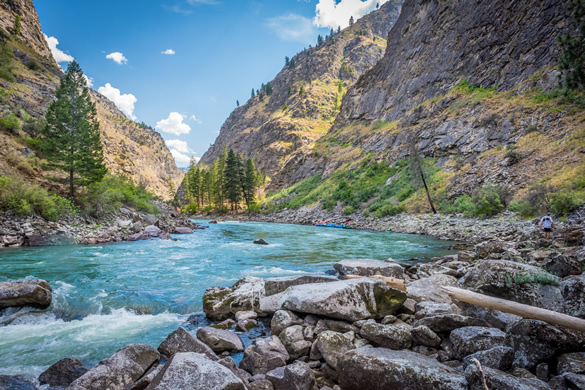
Free Flowing River:
Unencumbered, natural, healthy. All words that embody a free flowing river. The Salmon River is one of the longest free flowing rivers in the country and part of that is the Middle Fork of the Salmon, which is a major tributary to the Salmon River. Free flowing rivers (no dams) are able to maintain healthy ecosystems by ebbing and flowing with the natural rhythm of nature. In the spring as the snow and ice melt, the water volume rises and the river corridor flushes out, stirring up sediments and regenerating the shore line. As the volume decreases, beaches are renewed, the water clarity increases and the native habitats thrive. Winter allows for hibernation. Spring breathes new life into the environment. Summer provides habitat for spawning, procreating and growth. Fall makes way for renewal. And so the circle of life goes.
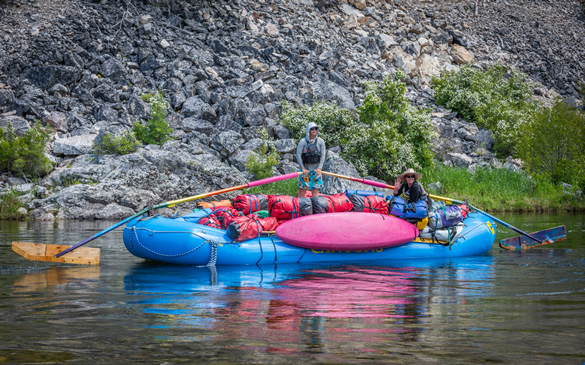
Sweep Boats:
Unique to the Salmon River drainage, sweep scows were designed during the mining boom in the late 1800s. The intent was to carry heavy machinery deep into the wilderness, by the river. The original sweep scows were made of green lumber, were up to 38 feet long, could carry up to 4 tons and were driven by two people, one on each scow (bow and stern). Today rafting companies use a modern rubber version that’s 22-24 feet long and driven by one person. Throughout history, Sweep Scows have altered the course of life on the river. Amenities such as vehicles were brought downstream to homesteads that are inaccessible by road. Sundries and goods were sold, traded and transported by sweep scow. And today the bulk of the gear on a commercial trip is carried by the Sweep Boat. SWEEP!
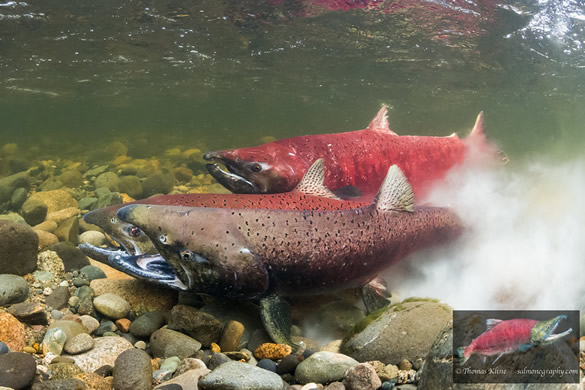
Wild Salmon:
Native to the Middle Fork and the Main Stem of the Salmon Rivers, Wild Chinook Salmon live a delicate existence. As smolt (baby fish) they travel backwards to the ocean where they spend anywhere from 1-8 years, eating and maturing. Once they are ready, they head back upstream to the same place, on the same river, that they were born. Once they’ve returned to their birthplace, they spawn and die. Upon their death, their bodies are absorbed into the earth, where their nutrient-rich carcass’ nourish the environment. The Chinook Salmon on the Middle Fork of the Salmon, travel the highest in elevation of all of the Salmon species, to return to their birthplace at 7000 feet, over 900 miles. Due to the presence of 9 dams on the Snake and Columbia rivers, the population of these fish has drastically declined. Help save the Salmon!






